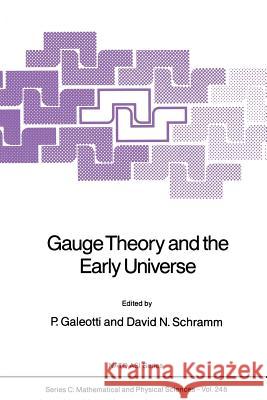Gauge Theory and the Early Universe » książka
Gauge Theory and the Early Universe
ISBN-13: 9789401078764 / Angielski / Miękka / 2011 / 388 str.
P. de Bernardis, S. Masi , G. Moreno Dipartimento di Fisica, Universita' "La Sapienza" 00184 Roma Italy ABSTRACT. Anisotropy measurement techniques and results are reviewed, with special attention given to experimental problems. The cosmological relevance of the dipole anisotropy, the only anisotropy truly detected in the Cosmic Background Radiation, is discussed. 1. INTRODUCTION Anisotropy of the Cosmic Background Radiation at 2.7 K (CBR hereafter) is a cosmological topic with a wide range of applications. In order to define anisotropy let us consider fig. 1 a, where the celestial sphere is shown with two beams A and B, with beamwidth 0 and angular separation e. We define the anisotropy of CBR at angular scale e in terms of the difference i'2,1 between the CBR flux I(ex,u) measured in the two beams. At small angular scales (e ) a "stochastic" approach is preferred, and the anisotropy is defined as .cJ I = GBP (1) I e where the brackets indicate averages over the whole celestial sphere. At large angular scales e>l a deterministic approach is preferred, and the CBR flux I(ex, S) is expressed as a sum of spherical harmonics (2) I (ex, S) = I ~ aIm Y (ex, S) lm I,m The alm coefficients give the dipole, quadrupole and higher order components of the anisotropy. 257 P. Galeotti and D. N. Schramm (eds.), Gauge Theory and the Early Universe, 257-282.











